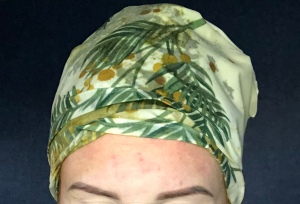‘Wishcycling’ and ‘Greenwashing’. Two important terms that every modern day consumer should be familiar with. Alternatively, two important terms which sound more like drunken wordplay by that one “eco-hippy” friend of yours. Both of these things are used by and aimed at those well intentioned individuals who want to make a difference for the planet. So grab a cuppa, pop your feet up and listen to some sober “eco-hippy” ramblings.
Wishcycling: Wishcycling is the process of putting items in a recycling bin instead of the general waste, even if you’re not sure whether they are recyclable or not.
We all know the drill. You’ve got a random piece of plastic packaging. You’ve maybe googled it to see if it can go in your household recycling. No luck. Surely it’s better to try recycling it rather than just sending it straight to landfill, right? Wrong. Welcome to the catastrophic concept of ‘wishcycling’.
There’s no denying that this recycling reflex action comes from a well-intentioned place. The thought that the more waste going to recycling than landfill the better. Unfortunately that’s not how the recycling process works. Here comes the technical part.. Recycled materials are taken to Materials Recovery Facilities where they are sorted by a series of conveyer belts, light sensors and other specialised technical equipment. Contaminants within these recycled materials can cause severe issues with the process including:
- Damage to equipment within the Materials Recovery Facilities
- Huge cost implications in time and money, due to operations having to be temporarily shut down to administer repairs (and let’s be real here, local councils don’t/won’t have an endless supply of money and patience when it comes to eco initiatives)
- Entire loads of recycled materials being sent to landfill, or away for incineration – including those materials that can be readily recycled
So what can you do? By all means recycle. Reduce and reuse what you can, and then recycle what you can’t. But do your research. Make sure that what you’re planning to recycle can actually be recycled. Household recycling facilities are accepting more and more as the demand for recycling increases, but they all have their limits. If you can take a minute out of your day to aimlessly scroll your brother’s-girlfriend’s-cousin’s-ex’s-dog’s insta profile, you can take a minute to look online and find details around what’s accepted by your local recycling facility online.

Think outside of the box. By now we’ve all heard about Terracycle and the abundance of schemes they have available for typically hard to recycle items. A few examples; Walkers are accepting crisp packets here, The Body Shop are accepting beauty and toiletries packaging here, Louellabelle accept all nail polish bottles here.. the list goes on. Ecobricks is another incredible global scheme that everyone should get themselves familiar with. I’ll say it again. Do. Your. Research. There are SO many recycling options out there just waiting for you to find them. Find the time and make a difference.
Just remember, if your research comes up empty, accept it. No, landfill is not something to promote in any scenario, but better that only one item goes to landfill that a full recycling load contaminated by a ‘wish-cycled’ item. If anything, let the discovery that an item isn’t recyclable actively discourage you from using that item again. Be open-minded. Find an alternative. Make new habits. Change is good.
No, ultimately recycling can’t save us, but wish-cycling will destroy us.

Much love. x











